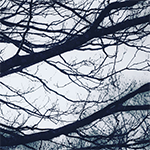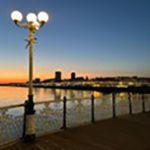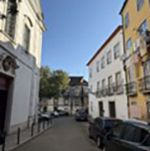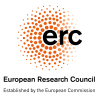The Sussex Baby Lab conducts research on how babies see, think and learn. We are particularly interested in understanding aspects of babies’ visual development such as how they see and respond to colour, scenes and complex images. We are also focused on understanding how babies respond to natural environments. We work closely with industry partners, the arts, charities and educators to ensure that our findings have a positive impact on babies’ lives.
Current Projects:
- Infant Perception of Natural Features
-
 We are interested in understanding whether babies are visually drawn towards visual features found in nature and natural scenes, by measuring their eye movements to natural and artificial patterns, images and scenes. Our research investigates the Biophilia hypothesis, which suggests that humans have an innate attraction to nature (Wilson, 1984). The current study is investigating how babies respond to fractal patterns (patterns which repeat on multiple scales that are often found in nature). We measure how long babies look at each image and also what parts of the image they look at. We are looking for babies from 4-9 months old to take part in our study.
We are interested in understanding whether babies are visually drawn towards visual features found in nature and natural scenes, by measuring their eye movements to natural and artificial patterns, images and scenes. Our research investigates the Biophilia hypothesis, which suggests that humans have an innate attraction to nature (Wilson, 1984). The current study is investigating how babies respond to fractal patterns (patterns which repeat on multiple scales that are often found in nature). We measure how long babies look at each image and also what parts of the image they look at. We are looking for babies from 4-9 months old to take part in our study.
- Nature Babies
-
We’re interested in the positive effects that nature might have on infants. In the past there has been lots of research on the benefits that nature has on adults- for example restoring their attention or reducing stress. However, these effects have not been tested on babies yet. In order to investigate this unexplored area we will be showing babies videos of nature and urban environments, or pictures of patterns found in nature, and seeing how this effects their attention and stress by capturing their eye movements or their heart rate. Babies must be 5-10 months to take part.



- COLOURMIND
-
 COLOURMIND is a 5 year project which aims to understand how human colour perception is related to how we perceive our colourful environment. The natural world has lots of visual characteristics and patterns - for example, the way the tree branches or how snowflakes are shaped (often called 'fractal patterns'), and there is a blue and yellow bias in what we see in nature, as it is lit up by either yellow sunlight or blue skylight. As adults, we seem to be tuned in to these patterns. For example, adults will prefer to look at images which match the patterns found in natural scenes, and our ability to tell colours apart is aligned to the blue-yellow pattern found in many natural scenes. This project aims to help us understand if the way that babies and children see and understand the world is also aligned with natural scenes, or if it's something we learn from seeing the environment around us as we grow up.
COLOURMIND is a 5 year project which aims to understand how human colour perception is related to how we perceive our colourful environment. The natural world has lots of visual characteristics and patterns - for example, the way the tree branches or how snowflakes are shaped (often called 'fractal patterns'), and there is a blue and yellow bias in what we see in nature, as it is lit up by either yellow sunlight or blue skylight. As adults, we seem to be tuned in to these patterns. For example, adults will prefer to look at images which match the patterns found in natural scenes, and our ability to tell colours apart is aligned to the blue-yellow pattern found in many natural scenes. This project aims to help us understand if the way that babies and children see and understand the world is also aligned with natural scenes, or if it's something we learn from seeing the environment around us as we grow up.
- Baby Art Critics
-
 Our research is about art through babies' eyes. The lab regularly works with museums and galleries to help them capture what babies will make of their collections and how their views differ from ours.
Our research is about art through babies' eyes. The lab regularly works with museums and galleries to help them capture what babies will make of their collections and how their views differ from ours.Read more about our work with the Royal Pavilion Baby Colour Trail.
Image from Royal Pavilion, Brighton (managed by Brighton and Hove Museums). Elements like mythical dragons, faces, colour and pattern are highlighted in their Baby Colour Trail.
Past Projects:
- CATEGORIES
-
CATEGORIES was a large European Research Funded project which investigated the orign of colour categories, and their impact on how we see colour in infants, toddlers, and adults. Although colour is a continuum, we break it up into discrete categories (e.g. 'red' 'green'), and there had been much debate around how these categories are formed, and how they might influence our colour perception. One of the studies we carried out showed that infants who don't yet know the words for colour can group colours together in a similar way to adults, and have at least five colour categories (red, yellow, green, blue, and purple). These colour categories seem to be shaped by the way the biology behind our colour vision works. We also ran an ERP study (a measure of electrical activity in the brain) to better understand how babies respond to 'unique hues' (a really pure example of that colour e.g. a blue which has no red or green in it), and a study on how toddlers learn the words for different colours.
To learn more, please read: Biological origins of color categorization

- EDUCATION
-
This project looked at the effect of colour on children's cognitive performance. Some evidence suggests that colour affects adult performance on cognitive tasks. For example, the colour of the front cover of an IQ test can affect results (e.g., Elliot & Maier, 2007). However, can colour have similar effects on children's performance on cognitive tasks in a classroom setting?
The effect of colour on performance on the tasks was measured in 8-9 year old children. It was found that the colour red significantly decreased performance by around 6% on overal test performance relative to a grey baseline. These findings may suggest that colour has a subtle influence over performance on educational-related tasks.
To learn more, please read: The effect of colour on children's cognitive performance

Photo credits – header image of babies, Shutterstock. Tree branches, Katherine Alexandra Symons. Nature Babies, University of Sussex, Brighton Pier and Portugal street, Deborah Antwi. Colourmind, ERC logo. Etta Loves baby images, Etta Loves. Education, AkzoNobel logo.
